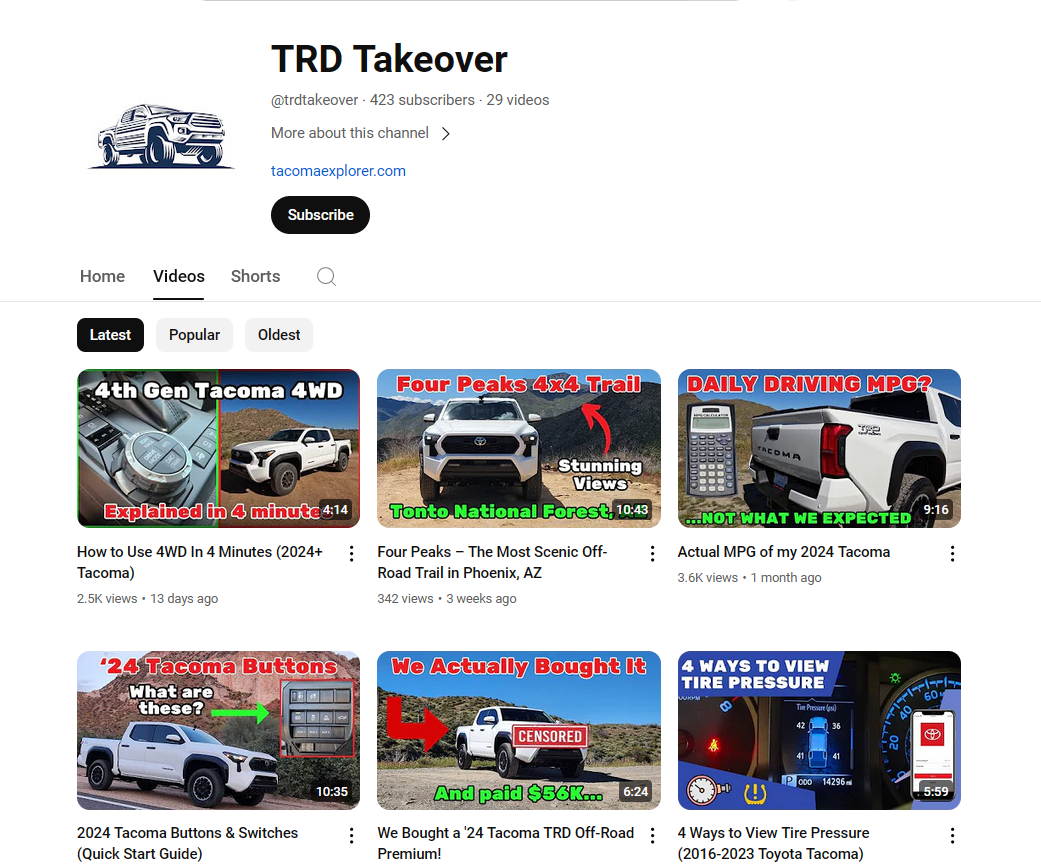An Overview of the Tacoma’s Pre Collision System (PCS)
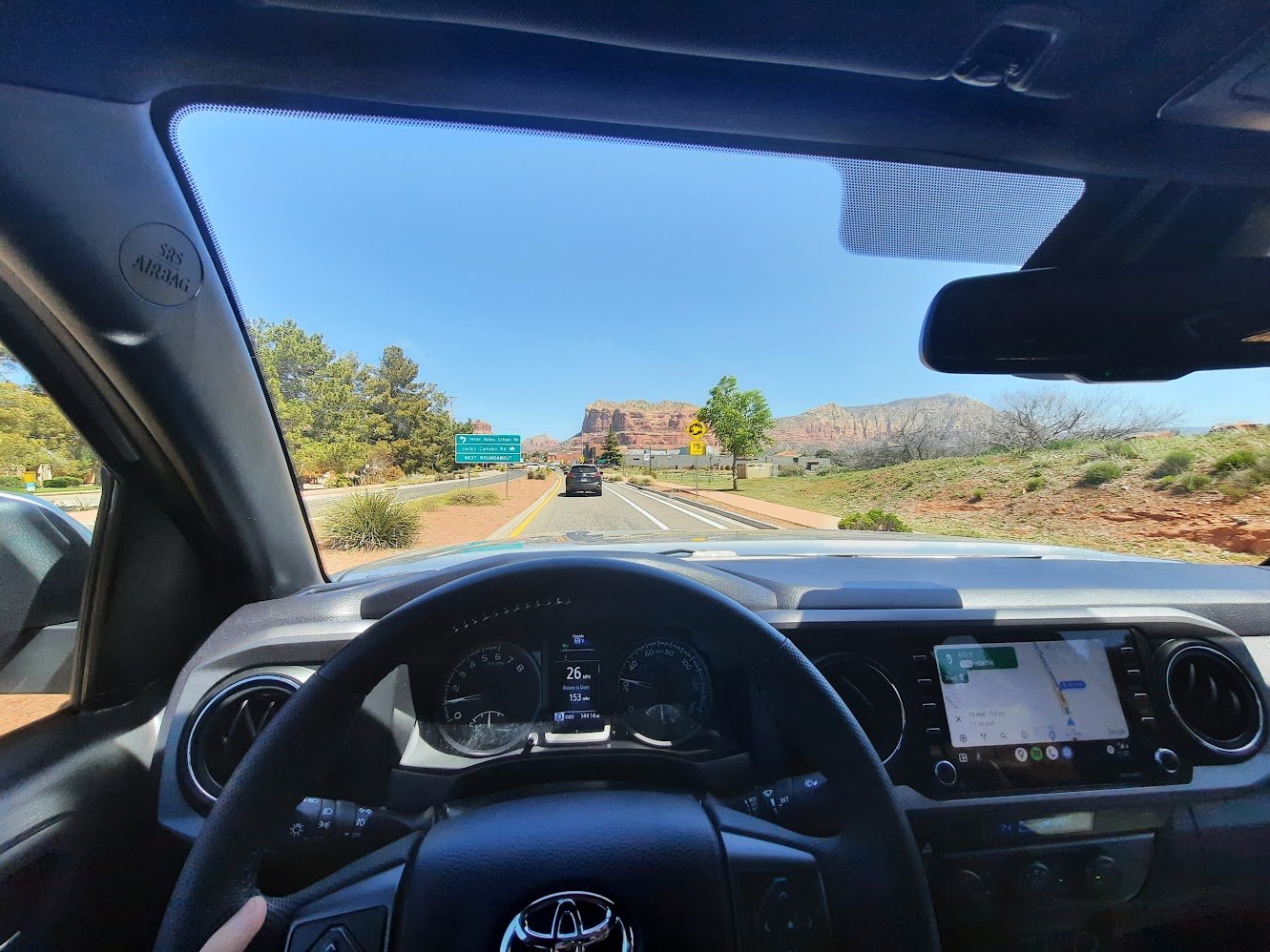
Today’s vehicles contain advanced driver technology that may be confusing to understand. One of the most discussed is the Tacoma Pre-Collision System (PCS). While included standard with today’s Tacoma, many drivers have no idea how this technology is helping protect the everyday drive.
In this guide, I cover the basics of the Pre-Collision System in Tacomas. I explain what it is, show you how it works and discuss normal operating conditions.
What Is PCS?
As part of Toyota’s Safety Sense system, the pre-collision technology is included. This advanced system relies on radar and a front camera to detect when pedestrians or vehicles are in front of the truck.
As the system computes that a front collision could occur, the warning system lets the driver know to take action. Evasive action and brake pressure may be automatically applied to prevent the collision from occurring or to reduce the impact.
(Toyota Tacoma Owner’s Manual)
Types of Hazard Detection
With the Safety Sense system, the Pre-Collision System with Pedestrian Detection (PCS w/PD) detects vehicles, cyclists, motorcycles and pedestrians.
Here are two examples of when the PCS may activate.
#1: As you drive down the highway, a car merges into traffic with the potential to cause an accident. The PCS sends out a warning and takes evasive action to prevent a collision.
#2: While traveling down a city street, a pedestrian walks out in front of traffic. The PCS sends out a warning to take evasive action to protect the pedestrian and prevent damage.
How It Works
The pre-collision system features a radar sensor, located behind the Toyota badge on front of the truck.
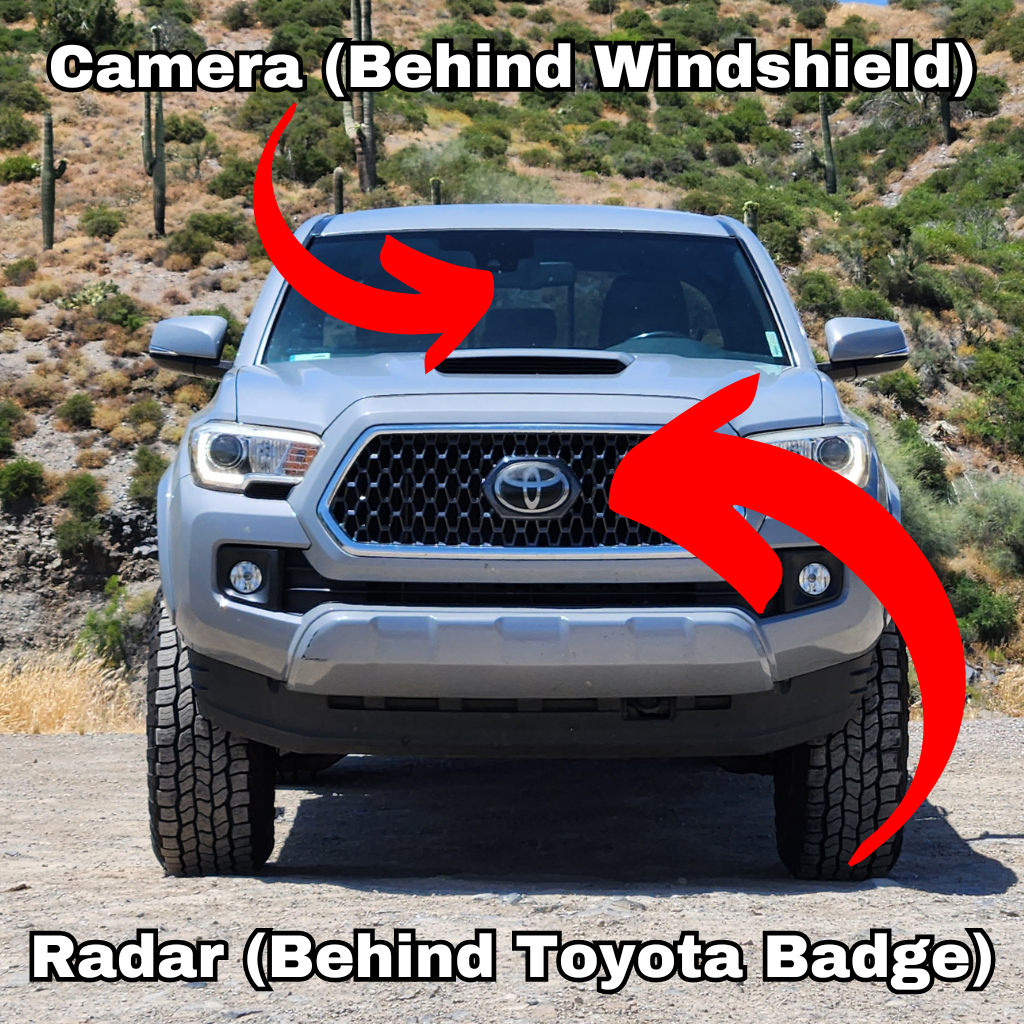
It combines the data received from the camera found in the windshield to determine if a collision is imminent.
The PCS has varying degrees of severity, determining how the system acts.
- Warning is displayed and buzzer sounds, urging the driver to take action
- Brake pressure is assisted
- Brake automatically applies
Operating Conditions
The normal operating conditions for the PCS include the following:
- Warning and automated braking operates when traveling between 7 and 110 mph
- Relative speed between the Tacoma and the hazard must be 7 mph or more
- Brake pressure assist operates between 20 and 110 mph, with the relative speed between the Tacoma and the hazard at 20 mph or more
- If vehicle speed is higher than 50 mph, PCS doesn’t detect pedestrians
Conditions Where It Won’t Operate
Some conditions may prevent PCS from working as intended. Here are a few examples to consider:
- After a battery terminal has been disconnected and reconnected without the truck being started for a specified time
- When the shift lever is in Reverse (R)
- If VSC is disabled (only the warning part of the system is operational)
- If low-speed 4-wheel drive is engaged (only the warning part of the system is operational)
If these conditions aren’t present and the system is acting up, it’s best to have it looked at by a qualified Toyota technician.
False Operating Conditions
In some cases, PCS may trigger even if there’s not a hazard to be concerned with. Some of the most common causes for this situation include the following:
- A passing car is making a turn
- Road is curvy, making vehicles in the opposite lane look like they are ahead of the truck
- Truck approaches objects on the side of the road, especially before a curve
- Approaching low-clearance structures
- In an automatic car wash
- Snow, dirt and debris hits the truck from the vehicle in front of you
Should I Leave PCS On or Off?
In most cases, it’s best to leave PCS activated. This vital safety feature prevents serious accidents, but it can’t work if it’s turned off. I always err on the side of playing it safe, by leaving default systems enabled.
Still, I understand that some situations require turning off the PCS. In these cases, I always recommend deactivating the safety system.
- Truck is being towed or towing another vehicle
- Truck is transported via tractor trailer, boat, train or other form of transportation
- Pickup is on a lift with the engine running and the tires rotate freely
- Drum tester is used to inspect the truck, such as a chassis dynamometer or speedometer tester
- Strong impact applied to the front grille or bumper, due to an accident or other causes
- Vehicle can’t be driven in stable conditions, typically after an accident
- During off-road travel
- Tires aren’t properly inflated
- Tires have excessive wear
- Wrong size tires installed (including compact spare tire or emergency tire puncture repair kit is used)
- Equipment on the front of the truck may obstruct radar (such as a snow plow)
How to Turn It On/Off
To turn the PCS on or off, you must adjust the settings found in the multi-information display menu.
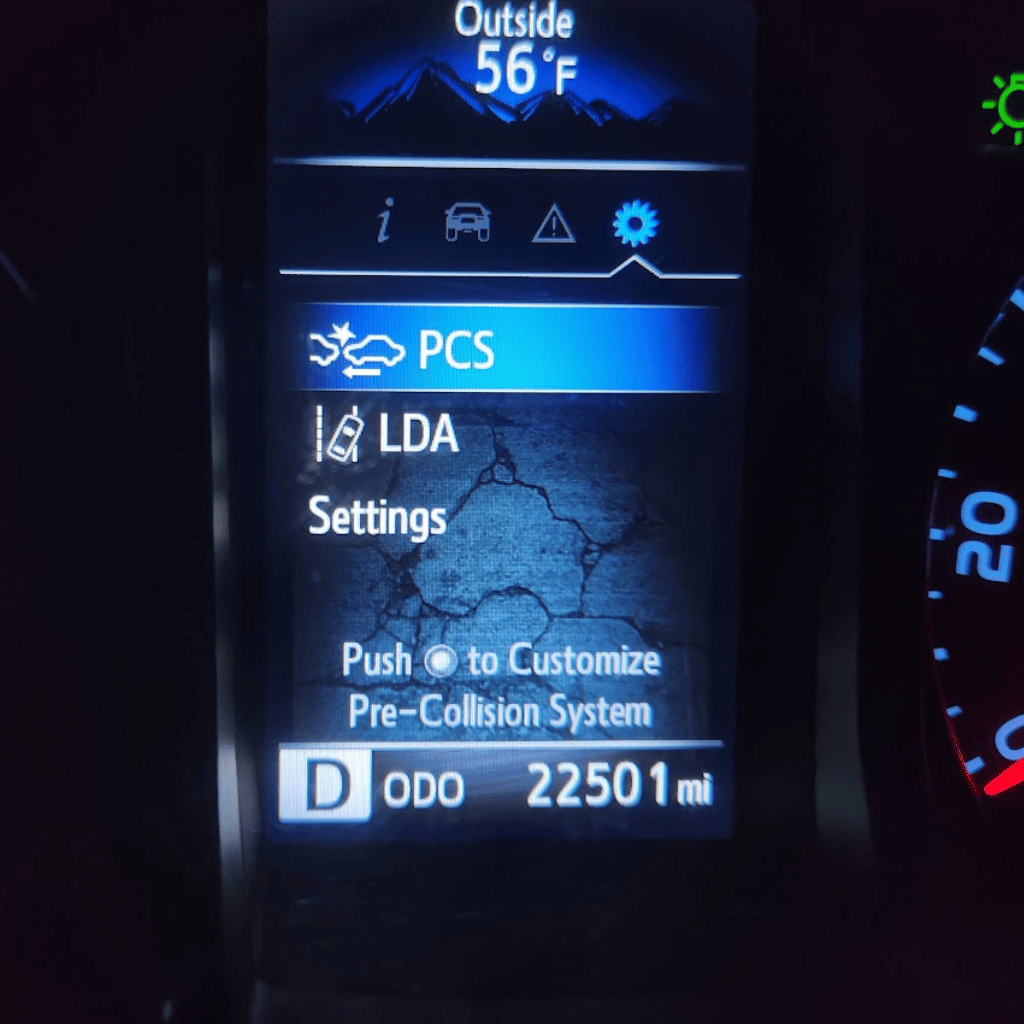
This menu also allows customization of the sensitivity from near, middle and far. These settings adjust the distance the PCS uses to react to hazards.
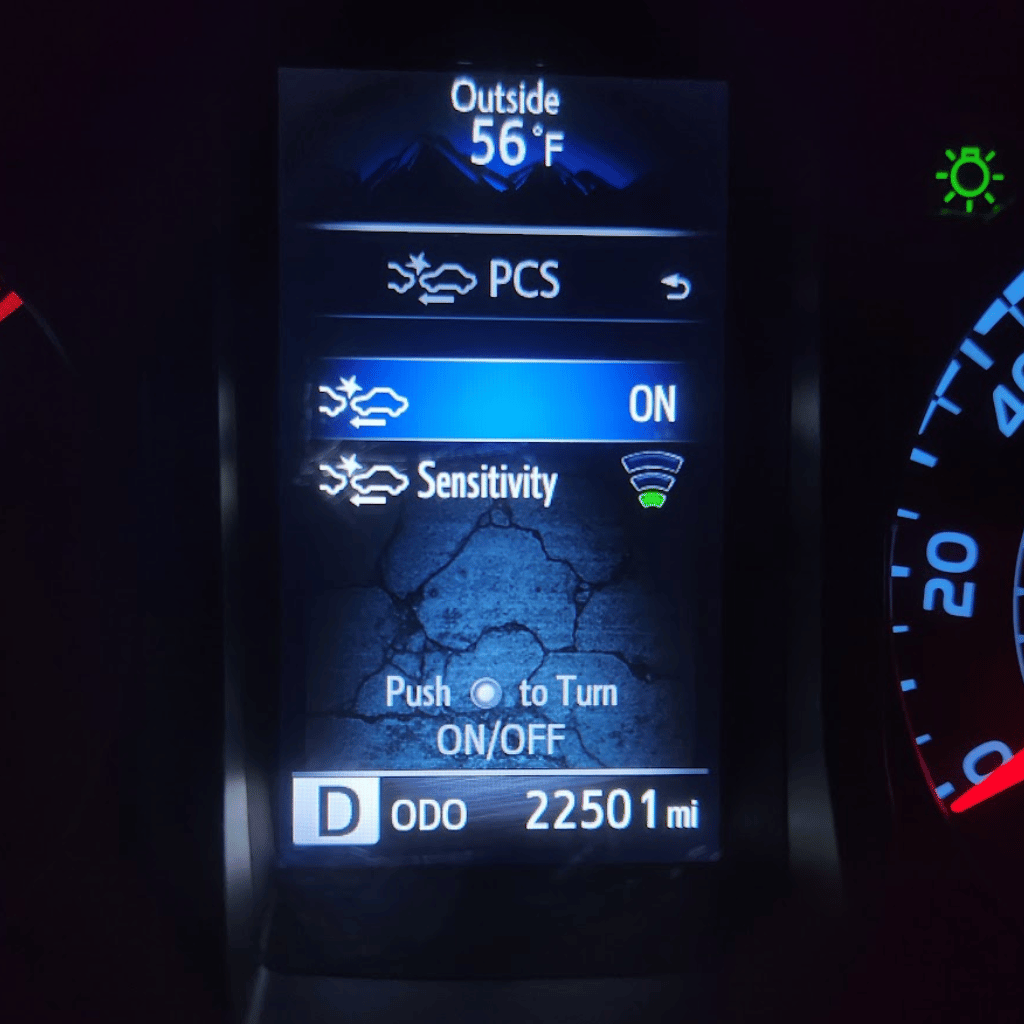
When the system is disabled, the PCS warning light turns on and a message is displayed in the multi-information center.
Safety Tips
When using, enabling or disabling PCS, there are some safety tips to remain aware of. While I always recommend reading the owner’s manual and instructions, here are a few of the most important tips to consider.
- Don’t rely on the PCS to protect you from accidents. You are responsible for driving safely.
- System may activate falsely and drivers should always be ready to respond (examples listed above).
- Don’t test the PCS on your own if there’s a potential problem. Have it checked by a Toyota technician.
- Braking force can be heavy when PCS is activated. Prepare to come to a stop quickly.
- Once the vehicle stops following PCS braking, the operation is canceled after two seconds. Prepare to push the brake pedal.
- PCS braking may not function if the driver takes steps to counteract it. If the accelerator is pressed heavily or the steering wheel is being turned, the system may deactivate.
PCS Is Designed To Protect You
Toyota has been a leader in safety system for many decades. With the release of the pre-collision system, you know that you and the occupants in your truck receive the protection needed. These systems provide peace of mind, as long as they are functional. Make sure you operate your truck as intended and have any issues checked by a qualified technician.

